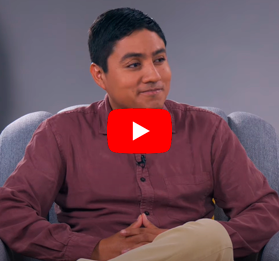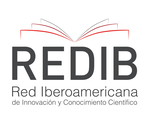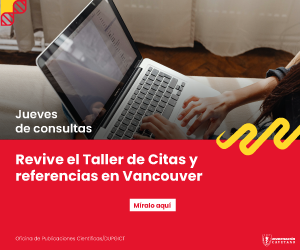Interventionism in large calcific tendinopathy: case report
DOI:
https://doi.org/10.20453/rhr.v7i1.5544Keywords:
large calcific tendinopathy, barbotage, ultrasonographyAbstract
One of the most common causes of chronic shoulder pain, which affects patients’ quality of life, is calcific rotator cuff tendinopathy. Management with analgesics, anti-inflammatory drugs and physiotherapy is preferred for mild symptoms; however, for severe symptoms, the alternative treatment is ultrasound-guided percutaneous barbotage, an effective technique due to its minimal invasiveness, low cost and rapid pain relief. We present the case of a 63-year-old female patient, a shopkeeper and housewife, with 7 months of evolution, characterized by pain in the right shoulder with paresthesias and functional limitation. The patient was treated with ultrasound-guided barbotage, high intensity laser and ultrasound. The corresponding check-ups were carried out. The aim of the study is to analyze the outcome of barbotage treatment in large calcific tendinopathy of the shoulder, which is a minimally invasive procedure that improves joint ranges and reduces pain in the patient.
Downloads
References
Rui YF, Lui PP, Ni M, Chan LS, Lee YW, Chan KM. Mechanical loading increased BMP-2 expression which promoted osteogenic differentiation of tendon-derived stem cells. J Orthop Res [Internet]. 2011; 29(3): 390-396. Disponible en: https://doi.org/10.1002/jor.21218
Louwerens JK, Sierevelt IN, Van Hove RP, Van den Bekerom MP, Van Noort A. Prevalence of calcific deposits within the rotator cuff tendons in adults with and without subacromial pain syndrome: clinical and radiologic analysis of 1219 patients. J Shoulder Elbow Surg [Internet]. 2015; 24(10): 1588-1593. Disponible en: https://doi.org/10.1016/j.jse.2015.02.024
Fernández ME, Albaladejo MJ, Álava S, Pérez OS. Tendinitis calcificante de hombro: factores de riesgo y efectividad de la iontoforesis con ácido acético 5 % más ultrasonido: estudio cuasiexperimental prospectivo a 5 años con 138 casos. Rev Soc Esp Dolor [Internet]. 2020; 27(6): 340-348. Disponible en: https://dx.doi.org/10.20986/resed.2020.3842/2020
Hurt G, Baker CL Jr. Calcific tendinitis of the shoulder. Orthop Clin North Am [Internet]. 2003; 34(4): 567-575. Disponible en: https://doi.org/10.1016/s0030-5898(03)00089-0
Del Castillo-González F, Ramos-Álvarez JJ, Rodríguez-Fabián G, González-Pérez J, Calderón-Montero J. Treatment of the calcific tendinopathy of the rotator cuff by ultrasoundguided percutaneous needle lavage. Two years prospective study. Muscles Ligaments Tendons J [Internet]. 2015; 4(4): 407-412. Disponible en: https://pubmed.ncbi.nlm.nih.gov/25767776/
Messina C, Banfi G, Orlandi D, Lacelli F, Serafini G, Mauri G, et al. Ultrasound-guided interventional procedures around the shoulder. Br J Radiol [Internet]. 2016; 89(1057): 20150372. Disponible en: https://doi.org/10.1259/bjr.20150372
Lee JP, Kim DS, Han JY, Baik SH, Kwak JW, Kim SH. Clinical and radiological outcomes of ultrasound-guided barbotage using a spinal needle and subacromial steroid injection for calcific tendinitis of the shoulder. Clin Shoulder Elb [Internet]. 2022; 25(2): 140-144. Disponible en: https://doi.org/10.5397/cise.2021.00724
Farin PU, Räsänen H, Jaroma H, Harju A. Rotator cuff calcifications: treatment with ultrasoundguided percutaneous needle aspiration and lavage. Skeletal Radiol [Internet]. 1996; 25(6): 551-554. Disponible en: https://doi.org/10.1007/s002560050133
Lanza E, Banfi G, Serafini G, Lacelli F, Orlandi D, Bandirali M, et al. Ultrasound-guided percutaneous irrigation in rotator cuff calcific tendinopathy: what is the evidence? A systematic review with proposals for future reporting. Eur Radiol [Internet]. 2015; 25(7): 2176-2183. https://doi.org/10.1007/s00330-014-3567-1
Downloads
Published
How to Cite
Issue
Section
License
Copyright (c) 2024 Doris Apaza Muñoz, Ronal Javier Huapaya Quispe

This work is licensed under a Creative Commons Attribution 4.0 International License.
All articles published in the Revista Herediana de Rehabilitación are under a Creative Commons Reconocimiento 4.0 International license.
The authors retain the copyright and grant the journal the right of first publication, with the work registered with the Creative Commons License, which allows third parties to use what is published whenever they mention the authorship of the work, and to the first publication in this magazine.
Authors can make other independent and additional contractual agreements for the non-exclusive distribution of the version published in this journal, provided they clearly indicate that the work was published in this journal.
The authors can file in the repository of their institution:
The research work or thesis of degree from which the published article derives.
The pre-print version: the version prior to peer review.
The Post-print version: final version after peer review.
The definitive version or final version created by the publisher for publication.











 Esta obra está bajo una
Esta obra está bajo una 